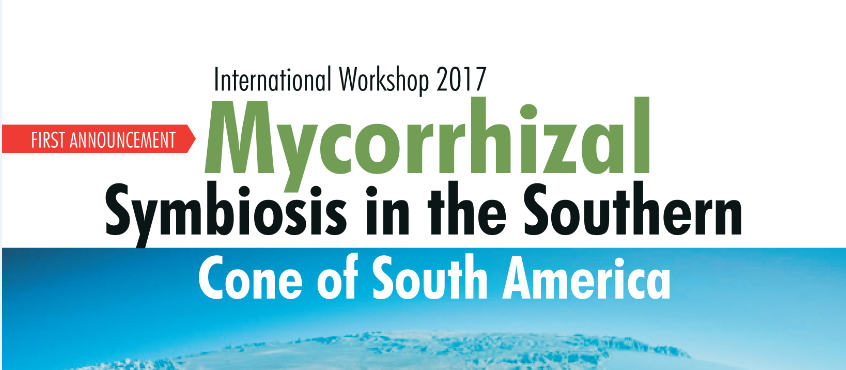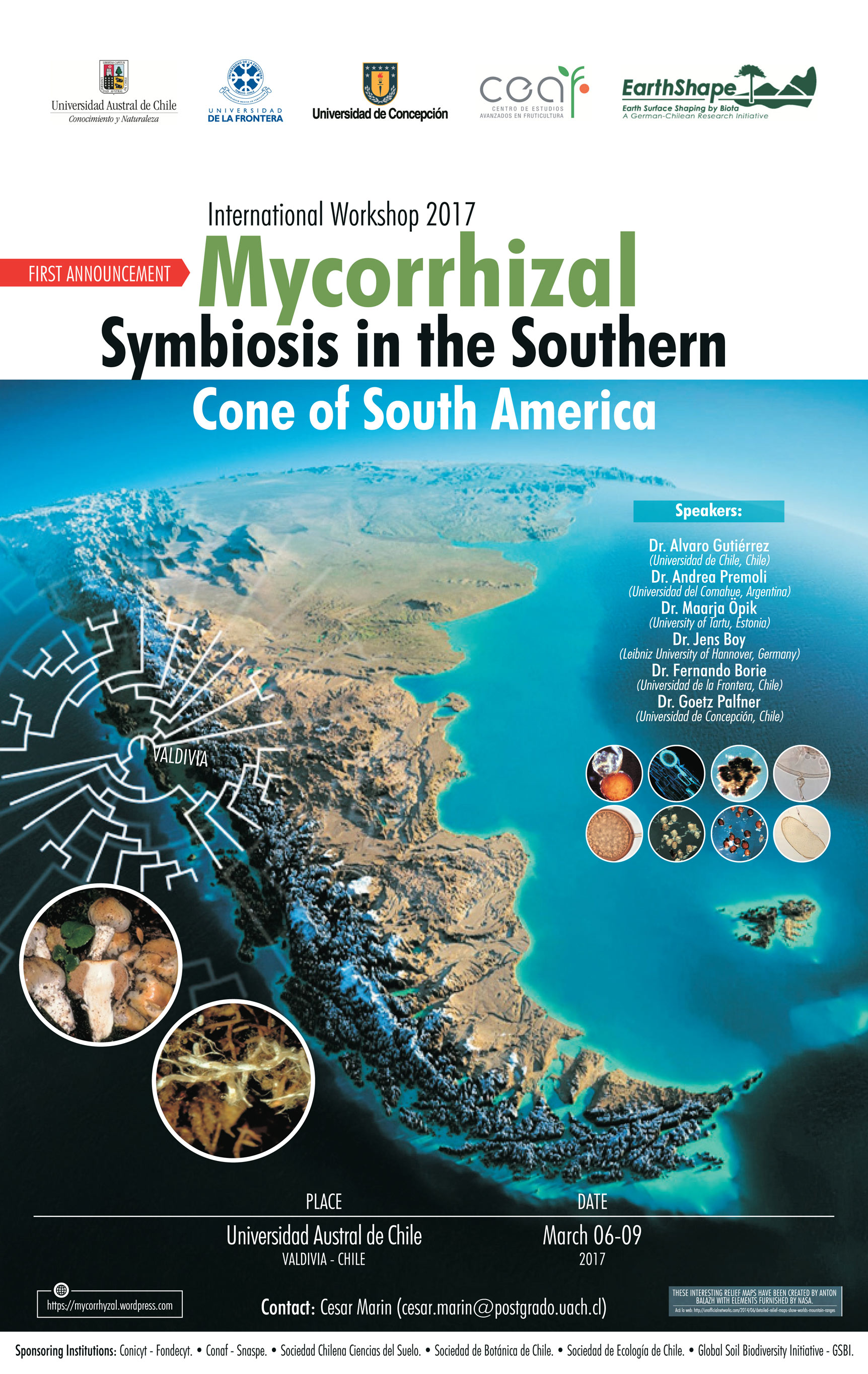Workshop 2017: Mycorrhizal Symbiosis in the Southern Cone of South America

The Southern Cone of South America sustains old-growth temperate rainforests that account for more than half of the southern hemisphere’s temperate rainforests. These forests represent a biogeographic island housing a high degree of endemism that was facilitated by Pleistocene glaciations and postglacial climatic fluctuations. Several factors contribute to the concept that these forests are unique, isolated islands; specifically, they have extreme environmental, edaphic, and orographic conditions that are enhanced by earthquakes and volcanic activity. Furthermore, the soil of these forests has particular characteristics such as a high retention of organic matter and low plant available phosphate. Additionally, Patagonian temperate rainforests are characterized by low levels of atmospheric pollution, and since the Holocene the floristic composition has been stable.
Southern South American temperate rainforests are located within the Chilean Coastal Range and the Andes Range, two mountain systems that have contrasting geological histories. The Coastal Range bedrock is highly weathered with important oceanic atmospheric nutrient influence. In contrast, young volcanic ash deposits and weathered basaltic volcanic scoria are found in steep slopes of the Andes Range, which mostly contribute to nutrient input dynamics. Glaciations in Southern South America have strongly influenced current plant species distributions, delimiting refuge areas for plants adapted to warmer climates. The Coastal Range, in turn, has similarly influenced the vegetation resulting in high plant diversity at the family level and isolated monotypic genera. Three main floristic types are found in temperate rainforests of the Southern Cone of South America: conifer-dominated forests, e.g. Fitzroya cupressoides, angiosperm dominated forests Nothofagus spp., and Valdivian forests.
There are various different types of mycorrhizal associations in these forests. In Nothofagus forests, ectomycorrhizal (EM) forms are the dominant and arbuscular mycorrhizal (AM) associations are found with subordinate plants. Overall, however, soil fungal communities have been poorly studied in North-Patagonian temperate rainforests. The first mycorrhizal studies in Chile determined the mycorrhizal dominance of conifer trees and Nothofagus species as well as the mycotrophic status of the vascular flora of several forests types. Some recent molecular studies have been focused on the study of soil fungi assemblages in North-Patagonia, specifically EM fungi in Chilean and Argentinean Nothofagus forests. Recent global studies have also included Chilean and Argentinean coniferous forests, comparing all fungal associations and specifically AM fungal communities.
Disturbances in forest ecosystems alter the interaction between biotic components and biogeochemical processes. In Chile and Argentina, different natural and anthropogenic induced disturbances are responsible for temporal and permanent land use changes that have respective impacts on local ecosystems. Forestry plantations are significant components of Chilean and Argentinean landscapes and economies. Deforestation and agricultural expansion are the most evident processes of anthropogenic land cover changes in Southern South America. During the last century, a large fraction of the Nothofagus forests in this region has been cleared for agriculture. Anthropogenic activities such as transport, industry, and agriculture have been increasing in this region and thus could substantially alter the atmospheric N load and subsequently N deposition.
Arbuscular mycorrhizal (AM) associations play a key role in the sustainability of terrestrial ecosystems, in particular those presenting limitations for the establishment and subsequent growth of plants involved in commercial activities. In Chile, more than 50% of arable soils originate from volcanic ashes, which poses constraints to crop production. In general, these soils have a low pH, high exchangeable aluminum content, and low levels of available P. Given these conditions, the maintenance of AM fungal propagules via the use cultural management practices and biotechnological advances could be a successful way to maximize the positive effects of fungal symbiosis on plant growth.
Aim:
This workshop is aimed at establishing the status of knowledge of mycorrhizal symbiosis in the Southern Cone of South America. It is also aimed at facilitating collaboration between researchers, students, and the mycorrhizal scientific community of Argentina, Chile, and other countries.
Activities:
The four-day workshop will be held at the Universidad Austral de Chile. Three days will be devoted to indoor meetings, and one day will consist of outdoor fieldwork in regional forests. Each day will include keynote lectures and participant oral and poster sessions. The participants are invited to submit their abstracts and extended paper submission for a special issue of Journal of Soil Science and Plant Nutrition (http://jsspn.ufro.cl/, impact Factor 1.6). The deadline for paper submissions will be announced later.
Venue and schedule:
The workshop will be held at the Facultad de Ciencias, Universidad Austral de Chile, Valdivia, Chile, between March 6th and March 9th, 2017. On March 9th, a field excursion to a temperate rainforest will be arranged; more information about this will be announced after registration.
Fees:
The participation cost is CLP $150.000 for professionals and CLP $ 70.000 for students. Included in the registration fee: admission to the workshop, program with abstracts, coffee and lunch breaks. Instructions for participant payment will be given after registration.
Brochure Workshop
Website

